List of Authors
>>About this blog
Recent blog post
|
[Asunaro]
February 17, 2018 12:00
February 16, 1805 (1805).
What happened in the grounds of Shiba Shinmei was Megumi's fight.
What was the story that the common people of Edo praised for the stylish measures of the magistrate at that time?
It's the subject of talks and plays.
It was komainu that the town fire extinguisher "Megumi" dedicated.
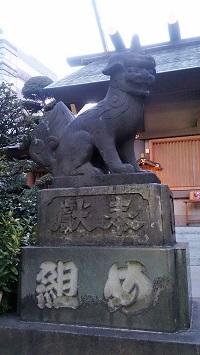 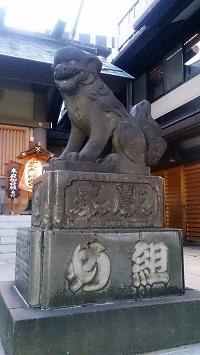
※Shiba grand shrine, Minato-ku (formerly Shiba Shinmeigu)
komainu, according to a public guidebook of the Heian period
"Left lion, yellow yellow, opening.
Right Goma Dog, in color white, unopened mouth, in corner"
From the temple, the left is the lion and the right is the komainu.
It was done.
And what is the name "Lion" in the architectural term.
Yes, there is. Sculpture on the pier used at the top of the pillar
It is called "lion tree nose".
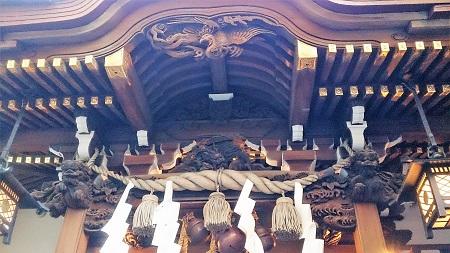
※Koami Shrine
You can see the lion's nose at Koami Shrine.
The only wooden cypress left in the Nihonbashi area
This shrine is designated as Tangible Cultural Property, Chuo-ku.
Ascending dragons, descending dragons, and Yoro Falls on shrine hall
It's worth seeing, such as sculptures.
Why don't you watch it slowly after worshiping?
◆Shiba grand shrine
1-12-7, Shibadaimon, Minato-ku, Tokyo
◆Koami Shrine
16-23, Nihonbashikoamicho, Chuo-ku, Tokyo
[Asunaro]
February 9, 2018 16:00
It's time for plum blossoms to bloom.
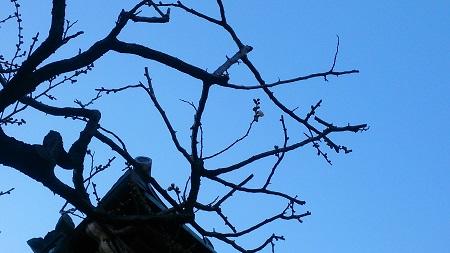
Because I continued to endure the harsh cold of winter
Gives a dignified and beautiful flower and gives a good scent.
On the grounds of Kiyomasa Koji Temple in the corner of Hamacho Park
One plum blossomed.
This land was built in the lower house of the Hosokawa family of Kumamoto feudal lord during the Edo period.
That's right. It was founded by encouraging the spirit of Duke Kato Kiyomasa
It's a separate house in Kumamoto Honmyoji Temple.
It is said that ordinary people have been allowed to worship since that time.
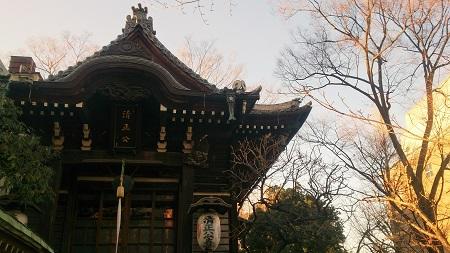
Let's feel the signs of spring after the spring has passed.
It will be. The predecessors who call the plum alias as "Spring Announcement"
It's wonderful.
A plum blossom with three beats, "Flower, Fragrance, Fruit."
Why don't you try it?
◆Kiyomasa Temple in Nichiren sect
2-59-2, Nihonbashihamacho, Chuo-ku, Tokyo
[Asunaro]
February 7, 2018 09:00
The first noon of 2018 was February 7.
It's the day of Inari's festival.
In rural areas, we wish for rich harvest, and in town
It is the day when merchants hold a festival to pray for business prosperity.
In the town of Edo, where there are many Inari shrines, it was very lively.
And I went to Terakoya from the first day.
It is said that reading and writing will improve, and children will become masters.
It was a day when I often entered the temple.
It's better to learn more than the character and Mt. Inari
It was Kikaku Takarai who wrote this phrase. Matsuo Basho's first master,
He was counted as one of the 1000s of Shomon.
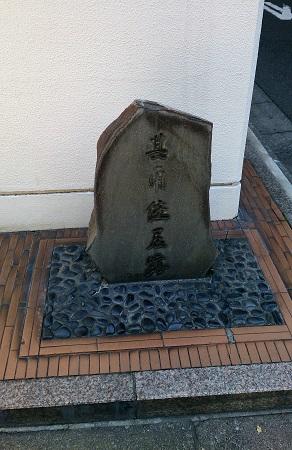
The ruins of the corner residence are located in Nihonbashikayabacho.
The neighborhood is the town where Tadataka Ino and Harumi Murata lived.
It is also fun to take a walk while remembering the intellectuals.
◆The ruins of the house
1-6-10, Nihonbashikayabacho, Chuo-ku, Tokyo
[Asunaro]
February 1, 2018 09:00
February 3 is Setsubun and "Ooka Echizen Day".
On this day of 1717 (Kyoho 2), Mr. Ooka Echizen Mamoru Tadayoshi was introduced.
I was appointed as Minamimachi magistrate.
For Edo, the great enemy is fire.
The 8th Shogun Yoshimune ordered Tadashi to strengthen fire prevention measures.
So Tadao thought about "the installation of a town fire extinguisher."
"Iroha Forty-eight sets," a self-defense fire extinguishing system for townspeople.
I organized it.
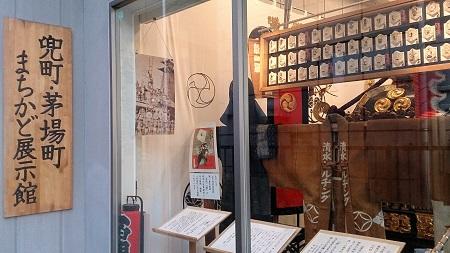
The stylish items related to "town fire extinguisher"
It can be seen at the Kabuto-cho and Kayabacho town corner exhibition hall.
Above all, around 1877, it contained a series of clothes from the time.
The picture is a must-see.

◆Kabuto-cho, Kayabacho Machikado Exhibition Hall
15-3 Nihonbashi Kabutocho, Chuo-ku, Tokyo, in Sakamotocho Park
Opening hours: 8:30~20:00
[Asunaro]
January 8, 2018 12:00
January 7 is one of the five verses, "Human's Day Festival".
Eat seven herbs porridge on this day.
I wish you a good harvest and sound health for a year.
"Serritory of the Buddha, Mt.

In the Heian period, the old customs of China were introduced.
In the Edo period, the shogunate made "Human Day" a public holiday as an official event.
As a result, the custom of eating seven herbs porridge is also available to the general public.
It seems that it has taken root.
In the Edo period, Komatsuna was added to this.
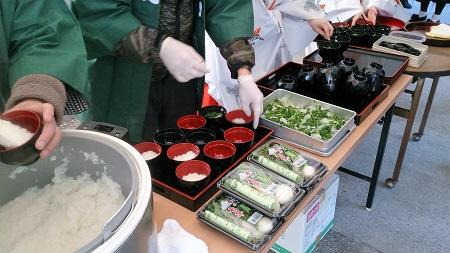
The calendar has been used by many people for a long time. There is a Japanese
There are wisdom and teachings of life and way of life that match the climate.
It is a good food for the recovery of the gastrointestinal tract when the New Year's fatigue begins.
And "People's Day" is a day that values people.
I also want to understand the meaning of the word.
◆Nanakusa Shinto ritual / Namishi Shrine
6-20-37, Tsukiji, Chuo-ku, Tokyo
After the festival from 11:00 on January 7, 2018
Free seven herbs porridge was served on the grounds on a first-come, first-served basis.
[Asunaro]
January 6, 2018 18:00
Tokyo Shimomachi Hachifukujin visits Chuo-ku and Taito-ku, Tokyo.
Visit the eight shrines where they are enshrined, and lead to the end.
It is to receive the virtue.
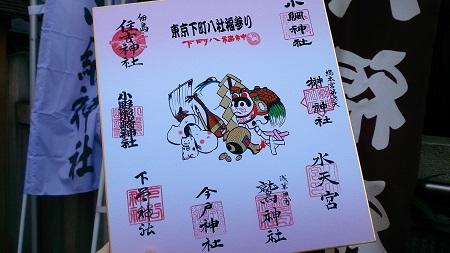
It's a fairly wide way around the downtown area.
Visit the eight shrines and enjoy a rich atmosphere.
It is also a feature of this course that you can enjoy the cityscape.
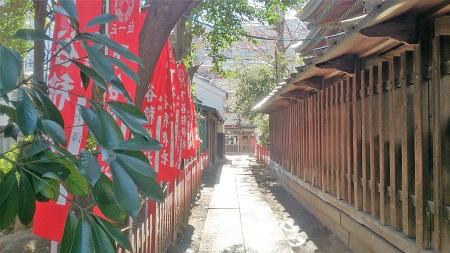
There are also shrines closely related to the local community.
I feel the soft and warm comfort.
You may go from any shrine.
You can start at any time.
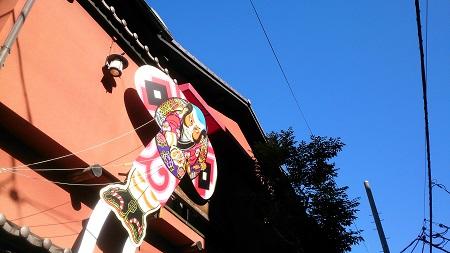
It seems that some people will go around in a few days.
Why don't you go out slowly?
◆I went to the eight companies and the eight blessings
Shitaya Shrine (House Safety) 3-29-8 Higashi Ueno, Taito-ku
Ono Teruzaki Shrine (Academic Performing Arts) 2-13-14 Shimotani, Taito-ku
Washi Shrine (Business prosperity) 3-18-7 Senzoku, Taito-ku
Imado Shrine (Marriage) 1-5-22 Imado, Taito-ku
No. 6 Ten Sakaki Shrine (Healthy Longevity) 1-4-3 Kuramae, Taito-ku
2-4-1 Kakigaracho, Nihonbashi-Karagaracho, Chuo-ku
16-23, Nihonbashi Koamicho, Chuo-ku
Sumiyoshi-jinja Shirine (Traffic Safety) 1-1-14 Tsukuda, Chuo-ku
|
Links
|


![]()












